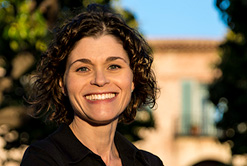A recent piece by the Kaiser Family Foundation (KFF) predicts that numbers of underrepresented minorities in medical school may dwindle further amid recent executive orders regarding diversity, equity, and inclusion in federally funded programs.
After the 2024 Supreme Court ruling that race-conscious college admissions policies violated the 14th Amendment, numbers of Black and Hispanic matriculants to medical school fell by double-digit percentages compared with the previous year.
This downswing was particularly troubling, considering that higher proportions of Black primary care doctors are correlated with longer life expectancy and lower mortality rates for Black individuals, according to a 2023 JAMA Network research article. Furthermore, a variety of studies have shown insidious biases against Black patients.
According to the Association of American Medical Colleges, in 2024-5, Black medical school enrollees declined 11.6% and students of Hispanic origin fell 10.8%. The decline in enrollment of American Indian or Alaska Native students was 22.1%. New Native Hawaiian or other Pacific Islander enrollment declined 4.3%.
Here is the KFF piece.

